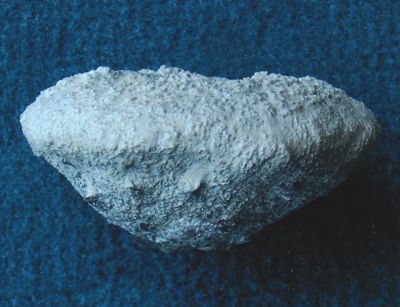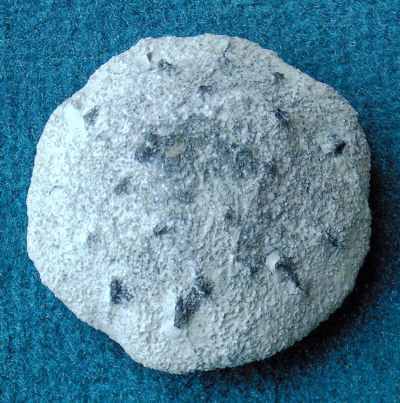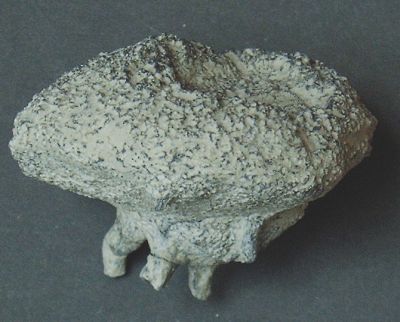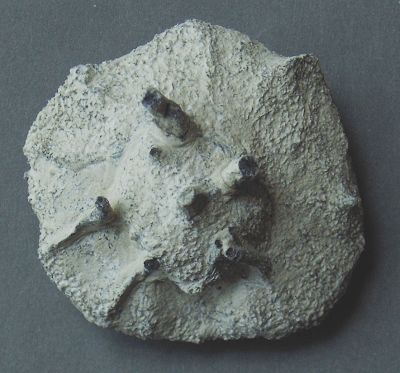

Spongodiscus radiatus
Courtiller 1861
Spongodiscus radiatus appears to be quite common in many French localities of Senonian age (cf. Moret, 1926), but it has not been previously reported from Northern Germany. The picture shows a typical example from Misburg.
The species has a disc-like to inverted cone-like shape, with a rough surface. The top is slighly convex while the conical bottom part is furnished with a number of small, outward pointing roots, which are arranged in a radial pattern and assume a rib-like habit.
On the top of the sponge there are one to several mm-sized postica, usually surrounded by prominent radiating grooves.


The example of Spongodiscus radiatus shown here has unusually strong roots, but also shows the radial ribs very well (bottom picture).
The spiculation of Spongodiscus is very similar to that of Plinthosella and Pycnodesma, consisting of tuberculated tetraclones (one arm generally missing) with twig-like extremities. In addition, there are some elongated, smooth, rhizoclonids found on the underside, which also make up the roots. Finally, there are siliceous platelets which are remains of a dermal layer.
In the author's opinion, Spongodiscus should better be placed into the Family Plinthosellidae, as for instance Moret (1926) did.